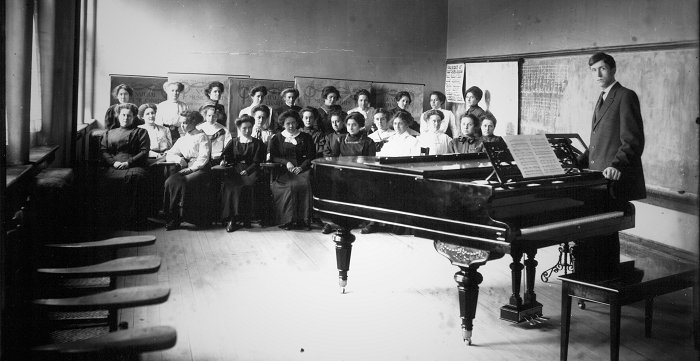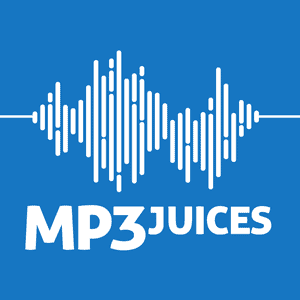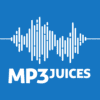A quiet revolution is underway in classrooms across America. The rumblings represent a shift from one learning model to another: from the traditional system that rewards students based solely on grades to a competency-based system — which focuses on equipping youth with the competencies they need to succeed in the classroom and beyond.
This is nothing new to music teachers. In the mission to improve the model of classroom learning, those teaching more traditional academic subjects can take a page from the music teacher’s book (or sheet music, rather).
Before we learn how to apply the music class teaching model to traditional classrooms, we must first gain a better understanding of competency-based learning.
A More Effective Way to Learn
Competency-based learning has been acknowledged by the U.S. Department of Education as the future of the American education system. It’s based less on class time, set lesson plans, and grades, and more on creating an environment where students are free to choose the pace and way in which they learn. The latter can involve the use of online and blended learning, as well as allowing students to choose how they earn credit (rather than assigning traditional grades). A dramatic shift from the classrooms of the past, competency-based learning is widely considered the best way to engage students, leading to better learning outcomes overall.
There are three major differences between traditional and competency-based education:
- Curriculum: In traditional classrooms, lesson plans are standardized, with little room to progress beyond what is being taught that day; competency-based curriculum allows teachers to test different subject matter in diverse ways, instead of adhering to a strict lesson plan.
- Progress: In traditional classrooms, all students are expected to move at the same pace. They are given the semester to complete the work, regardless of whether they’re more advanced, or struggling; competency-based education allows students to work at their own pace and finish class content as quickly or as slowly as they need, to develop a full understanding of the topics.
- Materials: Traditional classrooms are contained within school walls, and include materials such as textbooks, notebooks and PowerPoint presentations; competency-based classrooms have multi-faceted learning materials, including online modules, transparent lessons, and various work and play spaces. In some cases, a bulk of the learning happens outside the classroom altogether.
States such as New Hampshire, Michigan, and Ohio are leading the charge towards competency-based learning, and each has adopted initiatives to make the classroom more flexible and personalized. Ohio’s Credit Flexibility Plan encourages school districts to allow students to demonstrate their competency in certain subjects by participating in internships, community service, and educational travel.
Music Class’ Mastery of Competency-Based Learning
When it comes to education in music and the arts, there’s no such thing as a “standard” student. Music education has long-known there are too many facets of a student to take into account: learning styles, creativity levels, taste, genetic predisposers that dictate how well one can focus and sit still… the list goes on and on.
Music class simply wouldn’t work in a standardized setting. You can’t force a student to embrace Beethoven when all they want to do is listen to and play jazz. Nor can you disregard the different learning paces of students. In academic classrooms, students often stay silent if they don’t understand a concept, and the gap in their knowledge goes unnoticed; in music class, the teacher can hear their progress or lack thereof. Students are giving constant feedback through their display of technique and skill with their instruments; and taking that feedback, music teachers cater the lesson to speed up or slow down according to the student’s progress.
There’s also no right way to learn music, or play music — a lesson that traditional classrooms would do well to keep in mind. Music takes a student’s intuition, creativity, and emotion, and channels it into a personalized path forward.
That’s why music teachers incorporate plenty of time for individual practice. While it’s true that entire classes will come together to play band or orchestra music, a large percentage of music class is dedicated to students learning at their own pace, in their own space. Independent practice spaces provide room for students to experiment, be creative, and focus on the task at hand. Imagine if students in English class were allowed to select where and how they worked — the result would be a much happier and more effective learner.
Music class also allows students to select a learning device of choice: their instrument. While all of the students are learning the same overarching music concepts, think of the unique skills required for each. Percussion instruments demand an inherent sense of rhythm and may be chosen by students who find comfort in numbers and patterns. Woodwind instruments — such as the clarinet and saxophone — are ideal for students who can isolate each finger independently, and have whole-body coordination. The trombone requires gross motor skills and the ability for a student to sync their breathing with other body movements. While each of the above can be a learned skill, there is no denying that some will be more appealing and intuitive to a student, depending on his or her personality and natural tendencies.
When it comes to grading, many music class report cards look the same as those of an academic class: featuring percentage levels, or letter grades. What’s different, however, is that teachers usually come up with this “thinking-within-the-box” grade by looking at a student’s “outside-the-box” learning. By assessing a student’s efforts, enthusiasm, and dedication, as well as relative progress, music teachers gain a better understanding of competency than if they just gave a grade based on how skillfully a person plays an instrument.
From Music Class to Academic Class
So how can teachers translate the lessons of music into the math, science, English, and social studies classes of today? There are a few ways.
A good first step is to get rid of traditional rows of student desks. These create isolated working spaces and build a power dynamic that is focused around the person in charge (the teacher). For younger children, try pushing desks to the side of the room and sitting in a circle on the floor. Or for students of all ages, group desks together in pods — communal working spaces where students of different learning styles can compare notes, share ideas, and support one another in their learning. Teachers can then walk freely around the class, rather than staying affixed to the front of the room.
Traditional classrooms can also adopt the practice room model of music classes. Once a concept is shared, allow students to go off to various parts of the classroom, or school building, in order to do their work. They’ll naturally migrate to the spaces in which they’re most comfortable. Teachers can circulate these areas to have one-on-one conversations with their students, and answer individual questions.
Just as music class allows students to choose their instrument, competency-based classrooms should permit students to select their learning device of choice. Whether it’s online modules, audiobooks, social discussions and debates with their peers, or studying a conventional textbook; teachers must recognize there’s no one-size-fits-all approach to schools, or to the students within their walls.
Teachers of all subject matters know that it would be absurd to broadly assert, “It takes 32 days to learn a new algebra concept.” Learning and understanding something — whether that’s chapters in a novel, equations on a whiteboard, or music notes on a page — requires going through a process of making sense of that concept in your brain; often, that can be a very personal process. Embracing competency-based learning models — like the models we’ve seen in music classes for years — will allow teachers to cater lessons to all students, depending on the ways they learn best. Ultimately, the result will be competent students who come out of each school year with strong and long-lasting understandings of their academic subjects.
Jennifer Paterson is the President and Founder of California Music Studios. Jennifer has degrees from Boston University, The Royal Conservatory of Music of Toronto and the University of British Columbia. She was a recipient of The Canada Council Award to study at the well-known Royal Opera House in London, and was the principal soprano for the Boston Lyric Opera Company. Her dedication to the legitimate training of the voice and piano has made her a definite asset to the musical community of Southern California.

1 Comment
Leave a Reply
Cancel reply
Leave a Reply
This site uses Akismet to reduce spam. Learn how your comment data is processed.


























































































































































































Zach VanderGraaff
November 2, 2019 at 1:15 am
Thank you thank you thank you! Maybe it’s biased of me, but I’ve always felt like a lot of the “new” things in education have actually been done by use music teachers for decades. I wish everyone had the open mind to come to see what they could learn from us.